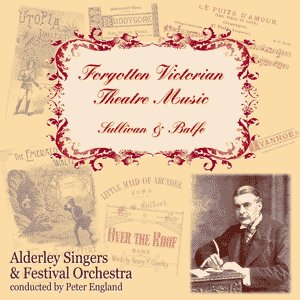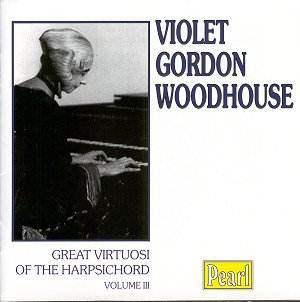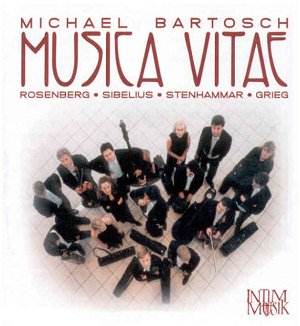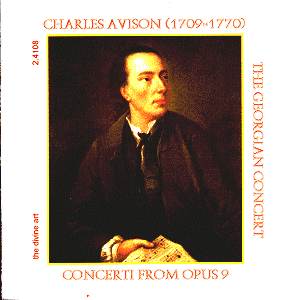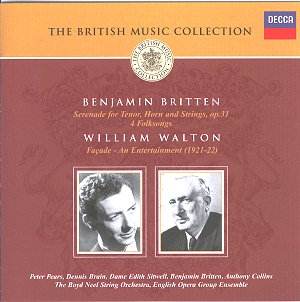 Composer: Benjamin Britten
Composer: Benjamin Britten
Works: Serenade for Tenor, Horn and Strings; Folksongs; William Walton, Façade
Performers: Peter Pears, tenor; Dennis Brain, horn; Benjamin Britten, piano; The Boyd Neel String Orchestra; Dame Edith Sitwell; English Opera Group Ensemble conducted by Anthony Collins
Recording: 1944-1961
Label: DECCA
Benjamin Britten’s artistry stands as a crucial pillar of 20th-century music, encapsulating a profound dialogue between tradition and modernity. His “Serenade for Tenor, Horn and Strings,” composed in 1943, reflects this duality, merging lyrical beauty with a haunting undercurrent of introspection. Paired with Walton’s “Façade,” a work that gleefully dances through the realms of parody and musical jest, this recording presents a compelling juxtaposition of Britten’s emotional depth against Walton’s exuberant wit, providing a rich tapestry of English musical identity.
The performances of these seminal works are undeniably stellar, anchored by the legendary tenor Peter Pears. His interpretation in “Serenade” is marked by a nuanced expressivity; each syllable is imbued with a delicate poignancy that captures the text’s inherent melancholy. The collaboration with Dennis Brain on horn is particularly noteworthy; Brain’s playing is imbued with a lyrical warmth that complements Pears’ voice beautifully. The string textures, provided by the Boyd Neel String Orchestra under Britten’s baton, shimmer with a clarity that highlights the intricate interplay between the instrumental lines and vocal lines. Collins’ conducting throughout “Façade” is equally commendable, displaying a deft control over the ensemble that allows for the whimsical character of Walton’s music to unfold with infectious energy.
However, the sound quality of the recording does present a notable caveat. Despite the historical significance and the artistry on display, the audio fidelity occasionally feels rough around the edges, particularly in the “Serenade.” This slight roughness can distract from the overall listening experience, especially when compared to modern recordings that boast pristine clarity. Nevertheless, the interpretative strengths of the performances often transcend these technical limitations, allowing the listener to appreciate the profound artistry that Britten and his collaborators bring to the table.
The coupling of “Façade” with Britten’s works is an inspired choice, despite the stark contrasts in musical sensibility. Walton’s piece, with its clever wordplay and vivid instrumental colors, serves as a light-hearted counterpart to the introspective nature of Britten’s “Serenade.” Sitwell’s idiosyncratic recitations, combined with Pears’ vivacious delivery, create moments of sheer delight, particularly in “The Marriner Man” and “A Man from a Far Countree,” where the playful execution showcases the ensemble’s virtuosity. The rhythmic precision maintained by Collins in these segments is commendable, ensuring that the humor of Walton’s music shines through without succumbing to chaos.
The inclusion of additional folksongs, recorded between 1959-61, while perhaps secondary to the main works, enriches the listening experience. These pieces offer further insight into Britten’s folkloric inclinations and his affinity for text setting, rounding out the recording with a sense of cohesion and thematic unity. The provision of texts in the booklet is a thoughtful touch, enhancing the listener’s engagement with the music.
This recording remains a cornerstone of Britten’s discography and serves as a benchmark against which subsequent interpretations are measured. Despite some sonic imperfections, the artistry encapsulated within these performances—marked by Pears’ distinctive vocal timbre and Brain’s expressive horn—places it firmly in the pantheon of essential recordings. For those seeking to explore the rich landscape of British art music, this collection offers a captivating glimpse into the interplay between two of its most significant composers.
